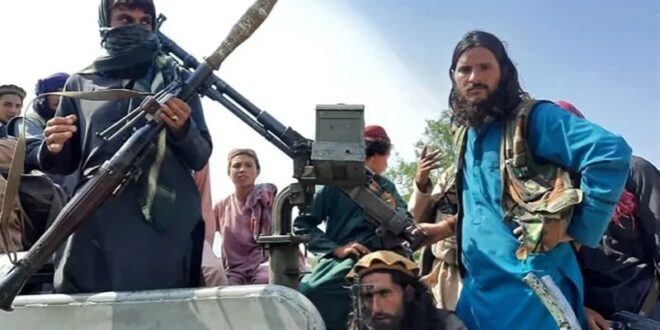As Afghanistan marks two years under Taliban rule, the world remains apprehensive about the nation’s potential resurgence as a safe haven for international terrorism. The world’s worst fears were confirmed over a year ago when the U.S. identified al-Qaeda leader Aimen al-Zawahiri in Kabul before killing him in a drone strike. This revelation heightened concerns as the Taliban had repeatedly assured U.S. negotiators that they had severed ties with al-Qaeda. This contradiction has generated significant anxiety about the security landscape in Afghanistan.
In the aftermath of the drone strike, the Biden administration presented its counterterrorism strategy as a response to the lingering threat. Policymakers took solace in the idea that the Taliban appeared to be engaged in curbing the Islamic State in Afghanistan, implying that the Taliban were assisting in controlling terrorist threats. However, delving into the situation reveals a more complex reality.
Afghanistan’s terrorist groups can be categorized into two groups: those aligned with the Taliban and those opposing them. Among the Taliban’s allies are al-Qaeda, Tehreek-e-Taliban Pakistan (TTP), and various Central Asian jihadi factions. The primary group in opposition to the Taliban is the Islamic State Khorasan (ISIS-K).
Al-Qaeda reemerged during the first year of Taliban rule, with increased messaging activity and statements from its leader, Zawahiri. However, al-Qaeda’s activity has since diminished, and its central leadership has shown a lack of capability to pose a direct threat to the United States through 2024, according to U.S. intelligence.
Contrary to al-Qaeda’s relative quiet, the TTP demonstrated significant escalation, launching attacks against Pakistani security forces. It exploited its presence in Afghanistan to expand operations and acquire resources, including recruits and weaponry.
ISIS-K, which initially posed concerns about territorial expansion, has seen a decrease in violence over the past year. The Taliban’s efforts to counter ISIS-K have led to the elimination of some of its leaders, although the group remains capable of high-profile attacks and has demonstrated transnational networking.
The Taliban’s approach to militants comprises three main elements: enablement, restrictions, and crackdown. While providing refuge and safety to various militant groups, the Taliban also limit their movements and offer material support, including weaponry. The group does, however, set restrictions, such as urging al-Qaeda not to target the U.S. or its allies.
Despite these contradictions, the Taliban’s central policy is rooted in its desire to host foreign jihadists who dissent against their own countries and to support global jihadist campaigns, particularly against Pakistan. This reflects the Taliban’s dual role as host and supporter, a delicate balance between jihadist ambitions and geopolitical considerations.
Regarding ISIS-K, the Taliban’s crackdown involves targeting high-value leaders, counterintelligence efforts within their ranks, and punishing populations associated with the group. The Taliban’s motivation stems from self-preservation, as ISIS-K poses a direct threat to the Taliban’s rule.
The evolving threat landscape in Afghanistan has not resulted in a worst-case scenario for U.S. interests. However, the Taliban’s policy of providing support to various terrorist groups, while pledging to prevent Afghanistan’s territory from being used for attacks, raises concerns. It remains unclear whether these groups could eventually target U.S. interests, including al-Qaeda and ISIS-K.
The U.S. should maintain communication with the Taliban to convey consequences for attacks on U.S. interests, reinforcing the importance of the Doha agreement. Additionally, sustaining international coalition pressure on the Taliban and expanding counterterrorism intelligence capabilities are crucial to maintaining vigilance against evolving threats.
In Afghanistan’s uncertain landscape, the balance between the Taliban’s jihadist ambitions and geopolitical calculations remains complex. The future security of Afghanistan and its potential impact on global counterterrorism efforts necessitate ongoing vigilance and strategic diplomacy.
 Eurasia Press & News
Eurasia Press & News




